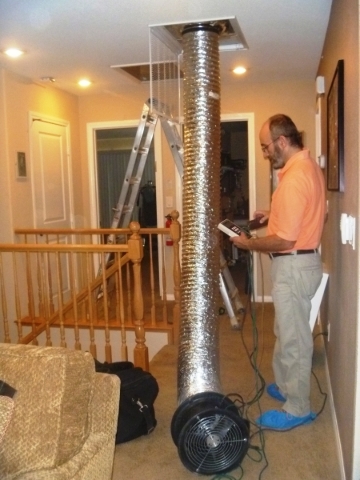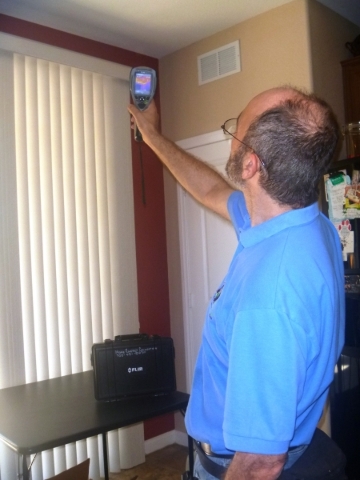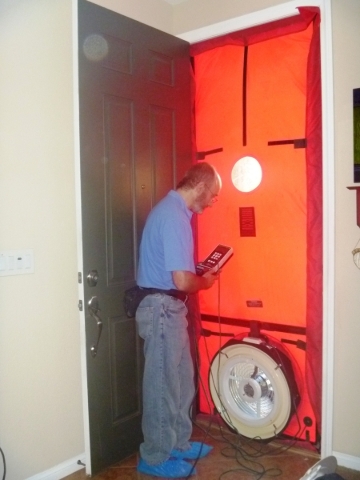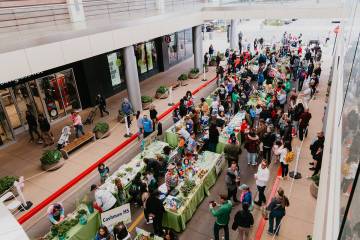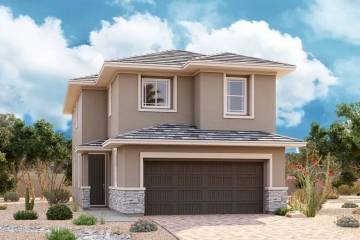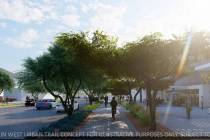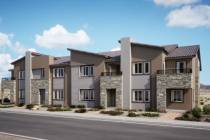What does green really mean?
The U.S. Department of Energy and U.S. Environmental Protection Agency have spent over 20 years promoting the use of "green" construction practices to the homebuilding industry through programs like Energy Star.
But what does "green" really mean to the average homebuyer and how much money does that person want to spend to achieve the deepest shade of green for their dwelling?
During 2005, under the George W. Bush administration, Congress enacted the Energy Policy Act that "established at the Department of Energy and the Environmental Protection Agency a voluntary program to identify and promote energy–efficient products and buildings in order to reduce energy consumption, improve energy security, and reduce pollution through voluntary labeling of or other forms of communication about products and buildings that meet the highest energy efficiency standards."
Whether the goal is home efficiency installations that save lots of "green" money over the life of the home or the use of recycled building materials that create a more "green" planet, homebuyers have different goals and budgets when they consider new-home purchases or existing home improvements.
Fortunately, there is a lot of overlap within the green housing spectrum. Most homeowners in Southern Nevada can enjoy cost savings and a healthier planet by mitigating their use of electricity, natural gas and water.
"The home is a system," observed Les Lazareck of Home Energy Connection. "Making an improvement in one area of the home can also affect changes to another part of the home system," he said.
"Switching from incandescent light bulbs to LEDs not only consumes less electricity, the LEDs also give off much less heat, which means that the HVAC system will not need to work as hard during the summer."
"Low-flow water systems save money by lowering consumption but also conserve the hot water created by the water heater for a longer period of time during cold mornings, so improvements to the plumbing system can also save natural gas usage."
Lazareck is a home energy auditor who has been certified by the Residential Network to provide inspections that comply with its Home Energy Rating System, also known as HERS, and has also been qualified by the Building Performance Institute as a building analyst.
His "whole-house" approach aims to improve the energy efficiency, comfort, health, safety and durability within a high-performance living environment, in the same way an automotive technician tunes up a high-performance car.
Lazareck has worked on statewide initiatives to adopt guidelines from the federal government's Building Performance with Energy Star program. He helped start up the HomeFree Nevada nonprofit organization that was later renamed EnergyFit Nevada to promote educational outreach to both homebuilders and consumers.
Mike Granly of Granly Construction has supported these programs as a homebuilder and remodeler.
"Attention to air infiltration, as well as heating, ventilation and air-conditioning systems can reduce household energy consumption by 10 to 15 percent," he said.
Caulking compounds are inexpensive products that can be used to seal leaks in the attic, walls, doors, windows or air duct systems that let outside air into the home during the winter or summertime.
HVAC systems are rated by the calculation of a Seasonal Energy Efficiency Ratio that compares cooling output during a typical summer season to the amount of electricity consumed. The standard was developed by the Air Conditioning, Heating and Refrigeration Institute. Existing homes may have a SEER-8 or SEER-9 rating, but newer homes are now requiring, at least, a SEER-13 rating for new HVAC system installations.
Installing ceiling fans in high-occupancy rooms can use less electricity to circulate air through the house than HVAC systems.
Consumers also can affect their seasonal HVAC energy consumption by how they use their thermostats.
"Most people set their thermostats to 72 degrees all year-round," Granly said. "But if they set their thermostats to 78 degrees during the summer and 68 degrees during the winter, they would see significant savings in their monthly energy bills."
Smart, programmable thermostats from companies like NEST can automate this process and harmonize HVAC usage in the home to the needs of the household.
Scott Wells is the chairman of the Green Committee for the Greater Las Vegas Association of Realtors, as well as a real estate agent with Signature Real Estate Group. Wells sees technology as another resource that can be applied by homeowners to bring down the cost of home ownership.
"Home efficiency technologies just keep getting better every year," he said. "Energy Star appliances continue to improve."
Wells has looked at the home water heating system as an area for cost savings.
"Just covering the water heater with a thermal blanket during the winter can help reduce natural gas costs," he said. "Passive solar water heating systems on rooftops are widespread in Europe but haven't yet caught on in the United States. Why not use the sun to complement the home water heating system by routing copper pipes that are painted black to the rooftop?"
Point-of-use heating systems with small tanks that use electricity to heat water on demand at a sink or shower are continuing to improve, and can also complement the consumption from the main hot water heater tank.
"In my house, it could sometimes take three minutes for the hot water to travel from the main tank in the garage through the pipes to a shower head on the other end of the home. Installing a recirculating pump in the middle of the home, that would shunt hot water more quickly to a remote shower from the main tank, would also help extend the life of the water heater by minimizing the amount of sediment build-up in the bottom of the tank," Wells said.
Wells said Xeriscape desert landscaping and automated irrigation systems go a long way toward minimizing water consumption in Southern Nevada, especially during the drought periods that local residents have experienced over the last decade.
NV Energy has been mandated by the Nevada Public Utilities Commission to provide energy bill rebates that encourage the adoption of energy-efficient technologies and practices to improve the efficiency of overall electricity consumption by rate payers. These include rebates for the use of LED lighting, energy-efficient swimming pool pumps and old refrigerator exchange programs. For information, visit www.nvenergy.com.
For more information about the federal government's Energy Star program initiatives, visit www.energystar.gov/about/.
Ways to save
1. Seal any leaks in the attic, walls, doors, windows or air duct systems that let in outside air during winter or summertime
2. Add insulation to ceilings and walls
3. Install energy-efficient heating, ventilating and air-conditioning systems with a SEER rating of 13 or better.
4. Use a smart, programmable thermostat to harmonize HVAC output with household needs during each season.
5. Switch from incandescent light bulbs to LEDs
6. Install a low-flow shower head and other plumbing fixtures
7. Install EnergyStar appliances for more efficient water and energy usage
8. Adopt Xeriscape desert landscaping practices with automated irrigation systems
9. Minimize water heater energy losses with a thermal blanket and add complementary water-heating systems to the plumbing.
10. Install double-pane window



